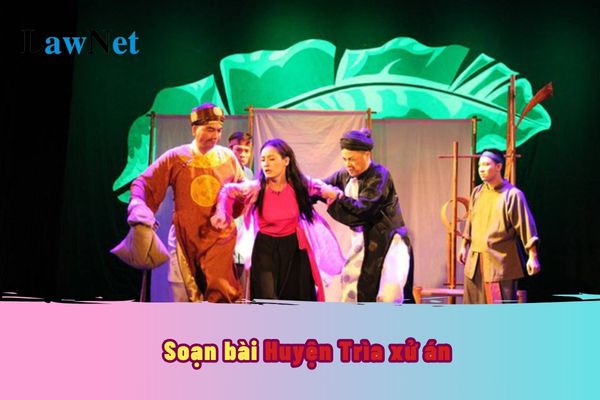What are the guidelines for preparing the lesson "Huyện Trìa xử án"? What is the number of lessons allocated in the Literature curriculum from grade 1 to grade 12 in Vietnam?
What are the guidelines for preparing the lesson "Huyện Trìa xử án"?
The lesson "Huyện Trìa xử án" is part of the 10th-grade Literature curriculum. Students can refer to the following guidelines for preparing the lesson "Huyện Trìa xử án":
The excerpt "Huyện Trìa xử án" is a work of profound realism and humanism. Through it, the author sharply criticizes the corruption and bureaucracy in feudal society and affirms the people's aspiration for justice. The work remains relevant today, reminding us of historical lessons and the importance of building a fair and civilized society.
|
Guidelines for preparing the lesson "Huyện Trìa xử án"
Main Content
The excerpt "Huyện Trìa xử án" is a vivid depiction of corruption, bureaucracy, and injustice in feudal society. Through the lawsuit between Trum So and Thi Hen, the author exposes the true face of the district official Huyen Tria: a greedy, shameless person who abuses power to extort money from the people. At the same time, the excerpt also shows the helplessness of the people under the oppression and exploitation of the officials.
Significance
Criticizing feudal policies: The work sharply criticizes the feudal policies with their injustices, corruption, and bureaucracy. The image of district official Huyen Tria is a typical representative of the corrupt officials who caused many grievances for the people.
Reflecting the suffering of the people: Through the character Thi Hen, the author vividly portrays the suffering of the people under the oppression of the officials. They are falsely accused, exploited, and have no right to speak.
Aspiration for justice: Despite being oppressed, the people still yearn for justice and a fair society.
Sarcastic irony: The author employs various artistic measures such as exaggeration and satire to evoke laughter, thereby criticizing the officials' vile acts.
Characters
Huyen Tria: The central character, representing the corrupt, shameless officials.
De Hau: Huyen Tria’s servant, who also engages in extorting money from the people.
Trum So: A wealthy person willing to use money to bribe officials.
Thi Hen: A poor woman falsely accused and suffers injustice.
Artistic Measures
Satire, humor: The author uses witty, humorous language to ridicule the greed and shamelessness of the district official.
Exaggeration: The plot details are exaggerated to highlight the humorous, satirical nature.
Reversal of situation: Situations in the story are often reversed, the ones in power becoming victims and the innocent being accused.
Vivid Character Description: The author uses vivid words and images to describe the appearance and personality of the characters.
Value of the Excerpt
Realistic Value: The excerpt vividly reflects the social situation of the era, particularly corruption and bureaucracy.
Humanistic Value: The work shows sympathy for oppressed people while condemning vile acts.
Artistic Value: The witty, humorous language and vivid character portrayals create the appeal of the work.
Lessons Learned
The need to condemn corrupt and bureaucratic acts.
Protect justice, fight for legitimate rights.
Respect the law.
|
*Note: Information is for reference only./.

What are the guidelines for preparing the lesson "Huyện Trìa xử án"? What is the number of lessons allocated in the Literature curriculum from grade 1 to grade 12? (Image from Internet)
What is the number of lessons allocated in the Literature curriculum from grade 1 to grade 12 in Vietnam?
Under Section 8 of the General education program in Literature issued with Circular 32/2018/TT-BGDDT, the program duration is as follows:
| Grade 1 |
Grade 2 |
Grade 3 |
Grade 4 |
Grade 5 |
Grade 6 |
Grade 7 |
Grade 8 |
Grade 9 |
Grade 10 |
Grade 11 |
Grade 12 |
| 420 |
350 |
245 |
245 |
245 |
140 |
140 |
140 |
140 |
105 |
105 |
105 |
Thus, the number of lessons allocated in the Literature curriculum from grade 1 to grade 12 in Vietnam corresponds to the table above.
When is Literature a mandatory subject in Vietnam?
According to Section 5 of the General education program in Literature issued with Circular 32/2018/TT-BGDDT, the orientations on educational content are as follows:
- Literature is a mandatory subject from grade 1 to grade 12. In primary education, it is called Vietnamese language, and in lower and upper secondary education, it is called Literature.
- The core content of the subject includes essential knowledge and skills in Vietnamese and literature to meet the requirements for students' qualities and competencies at each educational level; it is divided into two phases: basic education and career-oriented education.
Therefore, according to the above regulations, Literature is a mandatory subject from grade 1 to grade 12, i.e., from primary education to upper secondary education throughout the educational process.


